 W
WArchaeolemur is an extinct genus of lemurs that includes two species, Archaeolemur edwardsi and A. majori.
 W
WArchaeomaene tenuis is an extinct species of Late Jurassic archaeomaenid bony fish from the Talbragar River beds.
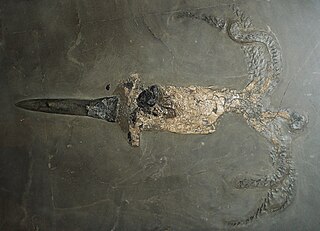 W
WBelemnitida is an extinct order of squid-like cephalopods that existed from the Late Triassic to Late Cretaceous. Unlike squid, belemnites had an internal skeleton that made up the cone. The parts are, from the arms-most to the tip: the tongue-shaped pro-ostracum, the conical phragmocone, and the pointy guard. The calcitic guard is the most common belemnite remain. Belemnites, in life, are thought to have had 10 hooked arms and a pair of fins on the guard. The chitinous hooks were usually no bigger than 5 mm (0.20 in), though a belemnite could have had between 100 and 800 hooks in total, using them to stab and hold onto prey.
 W
WCaptorhinus is an extinct genus of captorhinid reptiles that lived during the Permian period. Its remains are known from Oklahoma, Texas, Europe, India, the Pedra de Fogo Formation, Parnaíba Basin, Brazil and the Madumabisa Mudstone, Zambia.
 W
WCynodesmus is an extinct genus of omnivorous canine which inhabited North America during the Oligocene living from 33.3—-26.3 Ma and existed for approximately 7 million years .
 W
WCynognathus is an extinct genus of large-bodied cynodontian therapsids that lived in the Middle Triassic. It is known from a single species, Cynognathus crateronotus. Cynognathus was a 1.2-metre long predator closely related to mammals and had a southern hemispheric distribution. Fossils have so far been recovered from South Africa, Argentina, Antarctica, and Namibia.
 W
WDinocephalia is a clade of large-bodied early therapsids that flourished for a brief time in the Middle Permian between 270 and 260 million years ago (Ma), but became extinct, leaving no descendants. Dinocephalians included herbivorous, carnivorous, and omnivorous forms. Many species had thickened skulls with many knobs and bony projections. Dinocephalian fossils are known from Russia, China, Brazil, South Africa, Zimbabwe, and Tanzania.
 W
WDissorophus (DI-soh-ROH-fus) is an extinct genus of temnospondyl amphibian that lived during the Early Permian Period about 273 million years ago. Its fossils have been found in Texas and in Oklahoma in North America. Its heavy armor and robust build indicate Dissorophus was active on land, similar to other members of the clade Dissorophidae that are known from the Late Carboniferous to the Early Permian periods. Dissorphus is distinguished by its small body size, disproportionately large head and short trunk.
 W
WGorgonopsia is an extinct clade of early sabre-toothed therapsids from the Middle to Upper Permian. They are characterised by a long and narrow skull, as well as engorged upper and sometimes lower canine teeth and incisors which were likely used as slashing and stabbing weapons. Postcanine teeth are generally reduced or absent. For hunting large prey, they possibly used a bite-and-retreat tactic, ambushing and taking a debilitating bite out of the target, and following it at a safe distance before its injuries exhaust it, whereupon the gorgonopsian would grapple the animal and deliver a killing bite. They would have had an incredible gape, possibly in excess of 90°, without having to unhinge the jaw.
 W
WHemipneustes is an extinct genus of sea urchins belonging to the family Holasteridae.
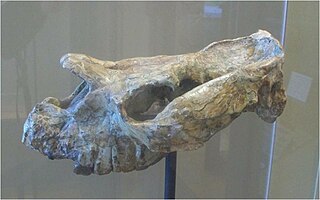 W
WLeontinia is an extinct genus of leontiniid notoungulate. Fossils have been found in the Deseado and Sarmiento Formations in Argentina and São Paulo Formation of Brazil, and are the most abundant remains of any animal found there. The genus dates back to the Late Oligocene, Deseadan in the SALMA classification.
 W
WLeontiniidae is an extinct family comprising eleven genera of notoungulate mammals known from the Middle Eocene (Mustersan) to Late Miocene (Huayquerian) of South America.
 W
WMicrogomphodon is an extinct genus of therocephalian therapsid from the Middle Triassic of South Africa and Namibia. Currently only one species of Microgomphodon, M. oligocynus, is recognized. With fossils present in the Cynognathus Assemblage Zone (CAZ) of the Burgersdorp Formation in South Africa and Omingonde Formation of Namibia and ranging in age from late Olenekian to Anisian, it is one of the most geographically and temporally widespread therocephalian species. Moreover, its occurrence in the upper Omigonde Formation of Namibia makes Microgomphodon the latest-surviving therocephalian. Microgomphodon is a member of the family Bauriidae and a close relative of Bauria, another South African bauriid from the CAZ. Like other bauriids, it possesses several mammal-like features such as a secondary palate and broad, molar-like postcanine teeth, all of which evolved independently from mammals.
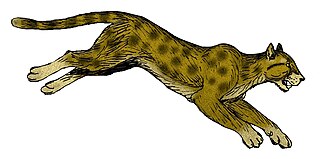 W
WThe American cheetah is either of two feline species of the extinct genus Miracinonyx, endemic to North America during the Pleistocene epoch and morphologically similar to the modern cheetah. These cats were originally known from fragments of skeletons, but nearly complete skeletons have been recovered from Natural Trap Cave in northern Wyoming.
 W
WParapuzosia seppenradensis is the largest known species of ammonite. It lived during the Lower Campanian Epoch of the Late Cretaceous period, in marine environments in what is now Westphalia, Germany. A specimen, found in Seppenrade near Lüdinghausen, Germany in 1895 measures 1.8 m (5.9 ft) in diameter, although the living chamber is incomplete.
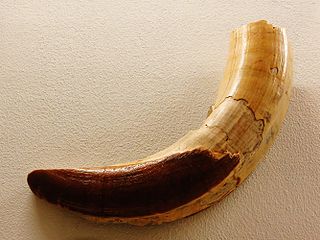 W
WParastrapotherium is an extinct genus of South American land mammal that existed from the Late Oligocene to the Early Miocene. The genus includes some of the largest and smallest known astrapotherian, but at present no generally recognized description can adequately characterize it.
 W
WPhysornis is an extinct genus of giant flightless predatory birds of the family Phorusrhacidae or "terror birds", within the subfamily Brontornithinae, that lived in Argentina. The type species is P. fortis. It lived during the Middle to Late Oligocene (Deseadan). Fossils of Physornis have been found in strata of 29.2 to 26.3 million years old, belonging to the Sarmiento Formation.
 W
WPlesiorycteropus, also known as the bibymalagasy or Malagasy aardvark, is a recently extinct eutherian mammalian genus from Madagascar. Upon its description in 1895, it was classified with the aardvark, but more recent molecular evidence instead suggests that it is most closely related to the tenrecs. Two species are currently recognized, the larger P. madagascariensis and the smaller P. germainepetterae. They probably overlapped in distribution, as subfossil remains of both species have been found in the same site.
 W
WPlutonides Hicks, 1895, is a genus of Middle Cambrian trilobite belonging to the Paradoxididae. In terms of the Scandinavian Middle Cambrian sequence the genus ranges from the Eccaparadoxides oelandicus Biosuperzone (Acadoparadoxides? pinus Biozone on Trwyncynddeiriog headland located 1.3 km SSW of St David’s Cathedral and 500 m east of Porth Clais Harbour - Pen-y-Cyfrwy Member, Newgale Formation, and possibly to middle part of the Mawddachites hicksii Biozone on the Penpleidiau Headland of Caerfai Bay south of St David’s in SW Wales, Locs. TC-1 & CF-1 of Rees et al.,.
 W
WPristerognathus is an extinct genus of therocephalian, known from the late Middle Permian (Capitanian) of South Africa. It lends its name to the Pristerognathus Assemblage Zone of the Beaufort Group of South African geological strata. Pristerognathus was a medium-sized therocephalian with a 25 cm (9.8 in) skull and a total length up to 1.5 m.
 W
WPyrotheria is an order of extinct meridiungulate mammals. These mastodon-like ungulates include the genera Baguatherium, Carolozittelia, Colombitherium, Gryphodon, Propyrotherium, Proticia, and Pyrotherium.
 W
WTitanosaurs were a diverse group of sauropod dinosaurs, including genera from Africa, Asia, South America, North America, Europe, Australia and Antarctica. The titanosaurians were the last surviving group of long-necked sauropods, with taxa still thriving at the time of the extinction event at the end of the Cretaceous. This group includes some of the largest land animals known to have ever existed, such as Patagotitan—estimated at 37 m (121 ft) long with a weight of 69 tonnes —and the comparably-sized Argentinosaurus and Puertasaurus from the same region.
 W
WTrirachodon is an extinct genus of cynodonts. Fossils have been found in the Cynognathus Assemblage Zone of the Beaufort Group in South Africa and the Omingonde Formation of Namibia, dating back to the Early and Middle Triassic.
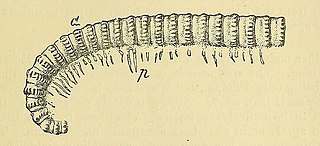 W
WXyloiulus is an extinct genus of millipede that lived during the Late Carboniferous which grew up to 2.25 inches (5.7 cm) in length. Fossils of the animal have been found in North America and Europe. The fossils are typically found in Sigillarian stumps.